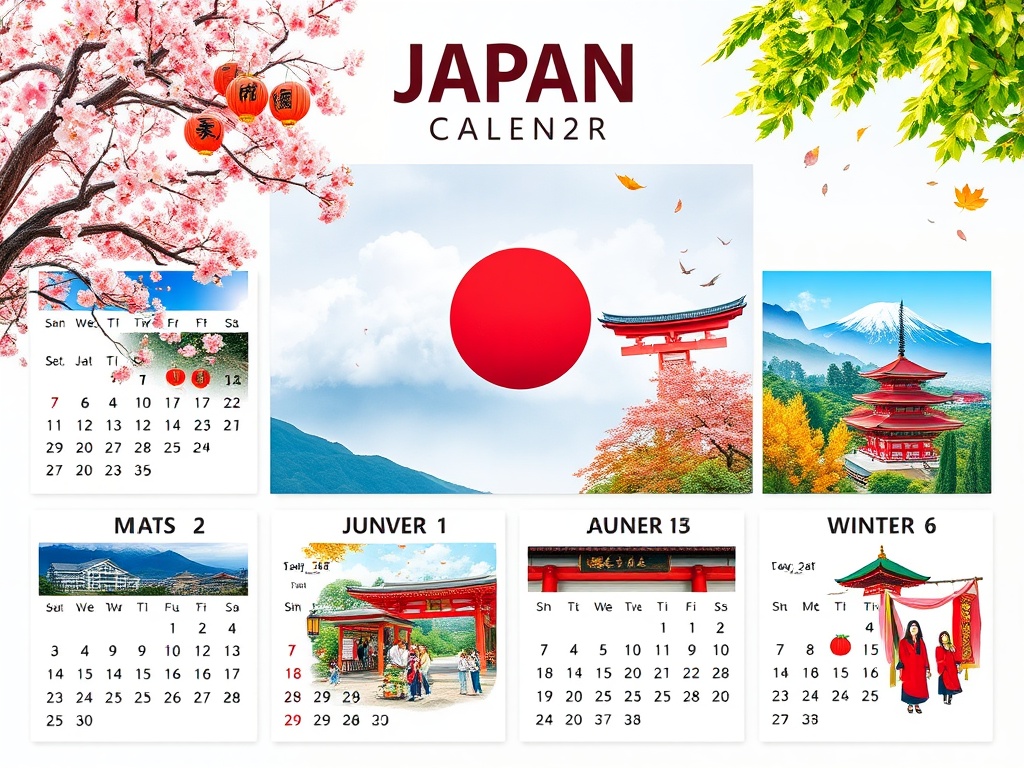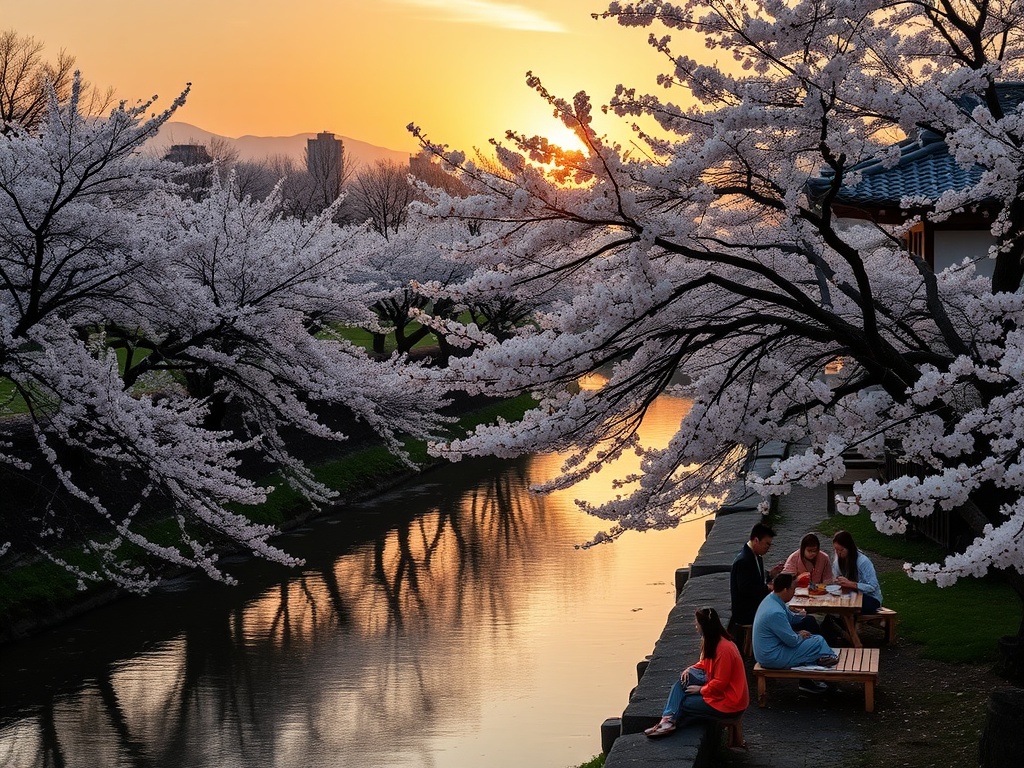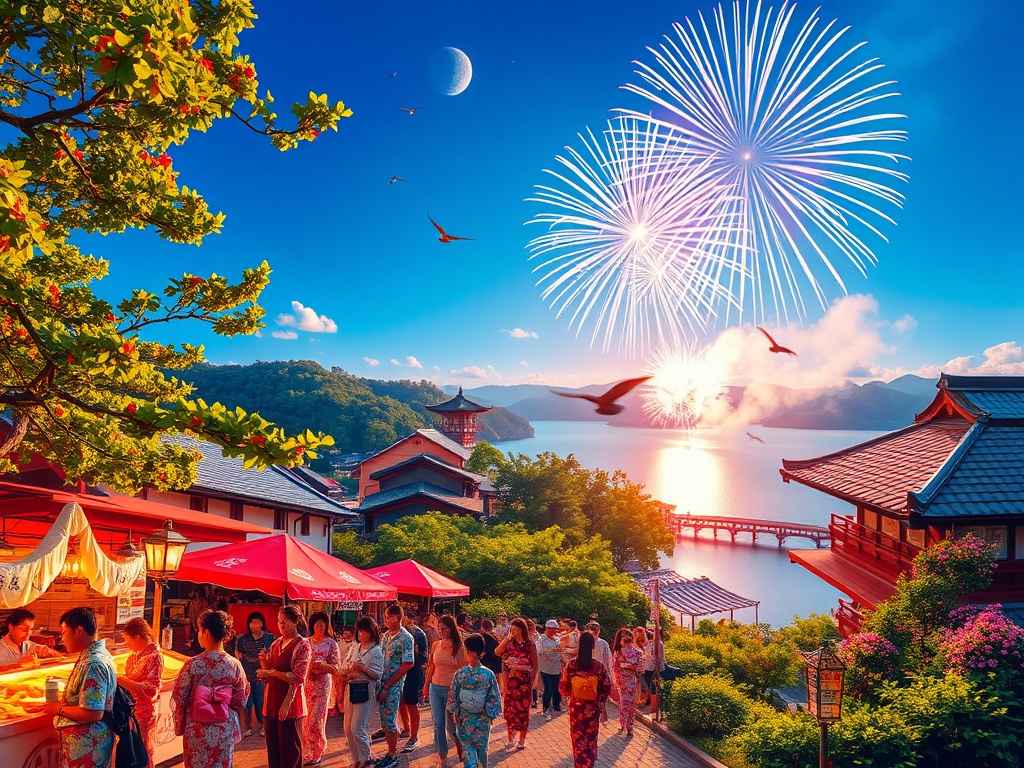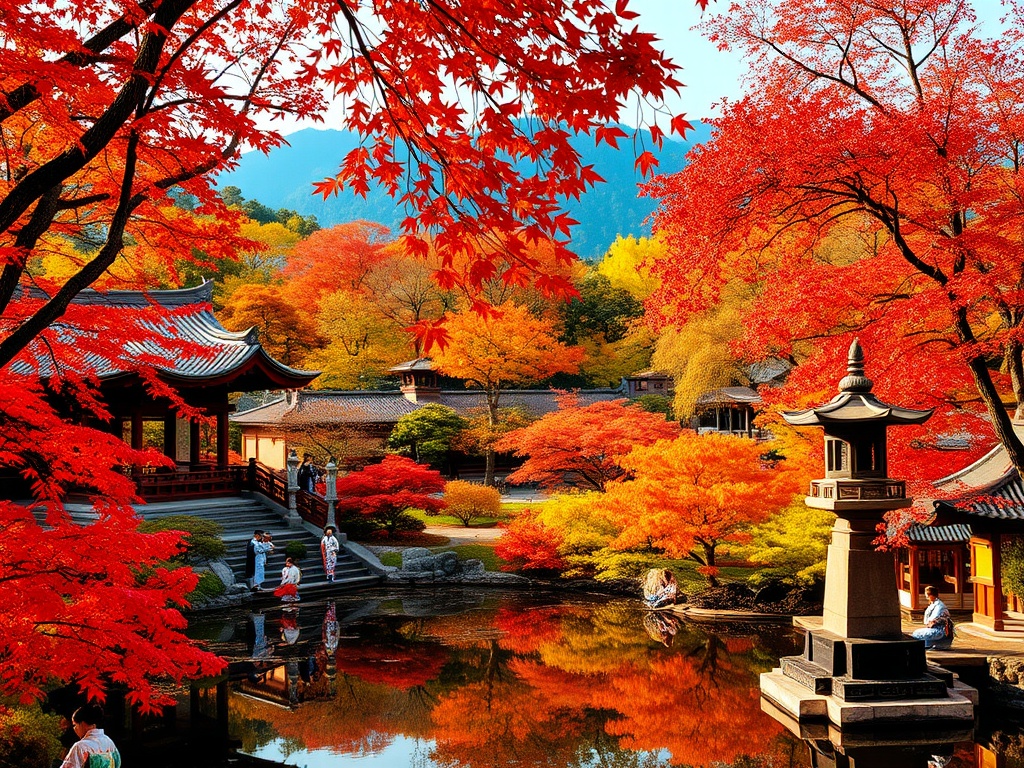Cherry Blossoms & Spring Magic: March to May in Japan
Win a Free Trip to Japan!
Experience cherry blossoms and ancient temples
As winter gracefully fades away, Japan transforms into a vibrant canvas of pink and white, welcoming the splendid season of cherry blossoms. From March to May, the country is swept up in a whirlwind of color, festivals, and cultural celebrations, making it an enchanting time for travel enthusiasts to explore the Land of the Rising Sun. Whether you’re drawn by the allure of sakura or the vibrant spring festivals, this period offers an unforgettable experience for every traveler.
Sakura, or cherry blossoms, are synonymous with spring in Japan, captivating both locals and visitors alike. The ephemeral beauty of these delicate flowers symbolizes the fleeting nature of life, a concept deeply ingrained in Japanese culture. As the cherry blossoms bloom, they paint cities and countrysides in hues of pink and white, creating picturesque landscapes that beckon to be explored.
During this time, popular spots like Ueno Park in Tokyo and Philosopher’s Path in Kyoto become vibrant hubs of activity, hosting hanami (flower viewing) parties where families and friends gather under the blossoms to enjoy picnics and celebrate the arrival of spring.
Japan’s spring is not just about natural beauty; it is also a season of lively festivals and cultural events that offer a glimpse into the country’s rich traditions.
- Noteworthy Spring Festivals:
- Hinamatsuri (Doll’s Festival) – Celebrated on March 3rd, where ornamental dolls are displayed to pray for the health and happiness of girls.
- Takayama Spring Festival – Held in mid-April, featuring ornate floats and traditional music, this festival is a testament to Japan’s exquisite craftsmanship.
- Golden Week – A collection of four national holidays from late April to early May, offering a spectacular display of traditions and modern culture.
Spring in Japan is characterized by mild temperatures and low humidity, making it an idyllic time for travel. However, the weather can be unpredictable, with occasional rain showers. It is advisable to pack layers and carry a light jacket or umbrella for comfort during your explorations.
| Month | Average Temperature (°C) | Weather Highlights |
|---|---|---|
| March | 5-14 | Cherry blossoms start blooming in southern regions |
| April | 10-18 | Peak cherry blossom season, pleasant weather |
| May | 15-23 | Greenery flourishes, warm days |
With its breathtaking landscapes and vibrant cultural experiences, March to May is undoubtedly a springtime spectacle in Japan that promises to captivate the hearts of travel and tourism enthusiasts.
Summer Vibes & Fireworks: June to August Explored
As spring’s pastel hues give way to the vibrant energy of summer, Japan becomes a land rich with festive celebrations and exhilarating experiences. From June to August, the country is alive with the sounds of traditional festivals, the glow of spectacular fireworks, and the infectious rhythm of summer events. This season, marked by a unique blend of cultural heritage and modern enthusiasm, invites travelers to immerse themselves in a Japan that is both timeless and refreshingly new.
In Japan, summer is synonymous with matsuri or traditional festivals, which are celebrated with unparalleled fervor. These festivals are a testament to the country’s vibrant culture, offering a chance to witness Japan’s historical richness and community spirit. Gion Matsuri in Kyoto is one of the most famous, held during July, known for its grand parades and elaborate floats. Meanwhile, the Awa Odori in Tokushima, held in August, draws visitors with its lively dance performances and infectious energy. Each festival is a vivid celebration of life, showcasing the artistry and passion of its people.
Summer in Japan is illuminated by the dazzling displays of fireworks festivals, known locally as hanabi taikai. These events light up the night sky with spectacular bursts of color, captivating audiences across the nation. The Sumida River Fireworks in Tokyo, held in July, is one of the most anticipated, attracting millions of spectators. The Nagaoka Fireworks in Niigata, celebrated in August, is renowned for its stunning pyrotechnics set against the serene backdrop of the river. Attending a fireworks festival is more than just an evening out; it’s an immersive experience that reflects Japan’s communal and celebratory spirit.
Traveling through Japan in summer offers its own set of challenges and rewards. With temperatures ranging from 20-30°C and increased humidity, it’s essential to stay hydrated and dress in breathable clothing. June often brings the rainy season, particularly in the south, but this gives way to sunnier days by July and August. Despite the warmth, exploring Japan during this time offers the benefit of lush landscapes and the chance to experience the country at its most vibrant and animated. Travelers should consider using Japan’s excellent rail system to navigate efficiently and comfortably during the bustling festival season.
Autumn Leaves & Cultural Extravaganza: September to November
As the vibrant colors of summer fade, Japan transforms into a breathtaking tapestry of autumnal hues. From September to November, the country is adorned with shades of red, orange, and gold, as the trees shed their leaves in a spectacular display. This period is not only a visual feast but also a time when Japan’s rich cultural heritage comes alive through a series of festivals and events that invite travelers to delve deeper into the heart of this enchanting land. Whether you’re drawn by the allure of nature or the charm of tradition, autumn in Japan offers an unparalleled experience.
The arrival of autumn in Japan heralds a mesmerizing transformation as the foliage turns into a kaleidoscope of colors. The iconic maple and ginkgo trees create stunning landscapes that captivate both locals and visitors. Kyoto’s Arashiyama and Nara Park are among the most popular spots to witness this natural marvel, offering serene settings for leisurely strolls and photography. The vibrant koyo, or autumn leaves, serve as a reminder of the beauty in change, and they create an ideal backdrop for cultural exploration and reflection.
Autumn is a season brimming with cultural vibrancy in Japan, as numerous festivals celebrate the nation’s heritage and artistry. One of the most significant events is the Jidai Matsuri in Kyoto, held in October, which takes attendees on a journey through Japan’s historical eras with its grand processions. Meanwhile, the Nagasaki Kunchi Festival, also in October, showcases a unique blend of Japanese and Chinese cultural influences through spectacular performances and floats. These festivals are an invitation to engage with Japan’s past and present, offering insights into the customs and creativity of its people.
Weather and Travel TipsAs the temperatures cool down from the summer heat, autumn in Japan is marked by pleasant weather, with temperatures ranging from 10-20°C. This makes it an excellent time for outdoor activities and sightseeing. However, it’s advisable to pack warm layers, as the evenings can be chilly. The clear and crisp days of autumn provide ideal conditions for exploring Japan’s scenic landscapes and vibrant towns. Travelers can make the most of this season by planning visits to both urban and rural areas, taking advantage of the efficient rail network to experience the full spectrum of Japan’s autumn offerings.
Winter Wonderland & Snow Festivals: December to February
As the year draws to a close and the landscape dons a pristine cloak of white, Japan morphs into a winter wonderland that captivates the hearts of visitors seeking both serenity and excitement. From December to February, the country offers a magical blend of snow-capped landscapes, vibrant festivals, and cultural traditions that entice travelers to explore the unique charm of Japan’s winter season. Whether you are an avid skier, a fan of intricate ice sculptures, or a lover of warm hot springs, this time of year presents a myriad of unforgettable experiences.
Japan’s winter months are synonymous with snowy adventures and breathtaking scenery. The northern regions, particularly Hokkaido, are renowned for their powdery snow, attracting ski and snowboard enthusiasts from around the globe. The renowned Niseko resort offers world-class slopes and a vibrant après-ski scene, making it a must-visit for thrill-seekers. Meanwhile, the tranquil landscapes of the Japanese Alps provide picturesque settings for snowshoeing and leisurely walks, inviting visitors to immerse themselves in nature’s serene beauty.
Beyond the adrenaline rush, winter in Japan offers a chance to experience traditional onsen (hot springs) in their most enchanting form. Nestled in snowy surrounds, these steaming baths provide a blissful retreat for relaxation and rejuvenation, allowing travelers to unwind amidst the stunning winter vistas.
Winter in Japan is not just about snow sports; it’s a time when the country comes alive with a series of spectacular snow festivals. The Sapporo Snow Festival in February stands as one of the most iconic, showcasing enormous ice and snow sculptures that transform the city into a dreamlike gallery. Visitors are treated to a dazzling display of artistry, with intricate carvings and illuminated figures creating an otherworldly atmosphere.
Another highlight is the Otaru Snow Light Path Festival, where the charming canal city of Otaru is adorned with countless glowing lanterns and snow statues, offering a romantic and peaceful ambiance. These festivals not only celebrate the beauty of winter but also reflect Japan’s artistic creativity and community spirit.
Winter travel in Japan requires some preparation to fully enjoy the season’s offerings. Temperatures can vary widely, with the north experiencing chilly conditions between -10°C to 5°C, while the southern regions remain relatively mild. It’s essential to pack warm clothing, including thermal layers and waterproof outerwear, to stay comfortable during your explorations.
Despite the cold, winter in Japan is a season of unparalleled beauty and cultural richness. Travelers can revel in the quiet charm of snow-covered temples and landscapes, partake in thrilling winter sports, and embrace the warmth of Japanese hospitality. Efficient rail services and well-maintained roads make it convenient to explore, ensuring that every journey through Japan’s winter wonderland is both magical and memorable.



